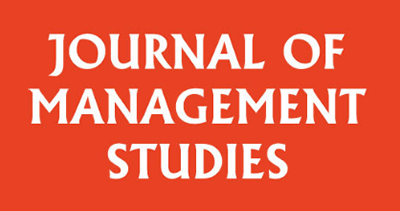
We’re living in an era where conversations about the future are more pertinent than ever. As we grapple with climate change, disruptive technologies, and complex societal challenges, many of us wonder: How do managers, employees, and other stakeholders shape futures in organizations and society? Our new article published in the Journal of Management Studies titled “Future-making: Toward a Practice Perspective” advances an approach to this question.
Future-making
The concept we explore is called ‘future-making.’ It refers to the ways in which organizational actors produce and enact what’s yet to come. This concept isn’t new. But what makes future-making research unique and urgently relevant in contemporary times? The answer lies in their innovative approach to understanding future-making: the practice perspective.
The Practice Perspective
We believe it’s a mistake to think about the future as something that already exists, waiting to be discovered, or planned for as if it were a fixed destination. Instead, we see future as something actively made in the present. This is where a “practice perspective” comes in. This perspective invites us to zoom in on what people inside organizations actually do – how they talk, what they decide, the tools they use, the meetings they hold – and to explore how the future emerges from these everyday choices, actions, and conversations. By looking closely at these often mundane activities through which organizational actors mold their vision of the future, we gain a richer understanding of how the future is made. This perspective not only opens up the conversation beyond forecasting, but also gives us a way to identify the specific practices that contributes to “future making”.
We Need the Practice Perspective
This understanding of future-making is especially germane in today’s complex and unpredictable world. Massive challenges such as climate change and AI necessitate the exploration of alternative ways of envisioning and creating futures. ‘Imaginary crisis,’ as called by some scholars, calls for insights into future-making to resolve contemporary issues, not only from a theoretical, but also a practical perspective.
But, there’s a risk. As the term future making gains popularity, it can start to mean everything – and therefore nothing. That’s where the practice perspective is so valuable. It does not treat “future making” as a vague concept. Instead, it offers a precise and grounded way to examine the specific ways of producing and enacting the future.
In the rapidly evolving domain of management practices, it’s crucial to ground our understanding of the future in the right frame. Understanding future-making from a practice perspective is a giant step in this direction. It not only enlightens our approach to ways of producing and enacting futures but also opens up exciting avenues for future research.
If you’re interested in uncovering how our present actions sculpt the future, the full paper is a must-read. As we continue to navigate an increasingly complex and uncertain world, it’s clear that we need to rethink our approach to future-making – and this research is an excellent starting point.

0 Comments